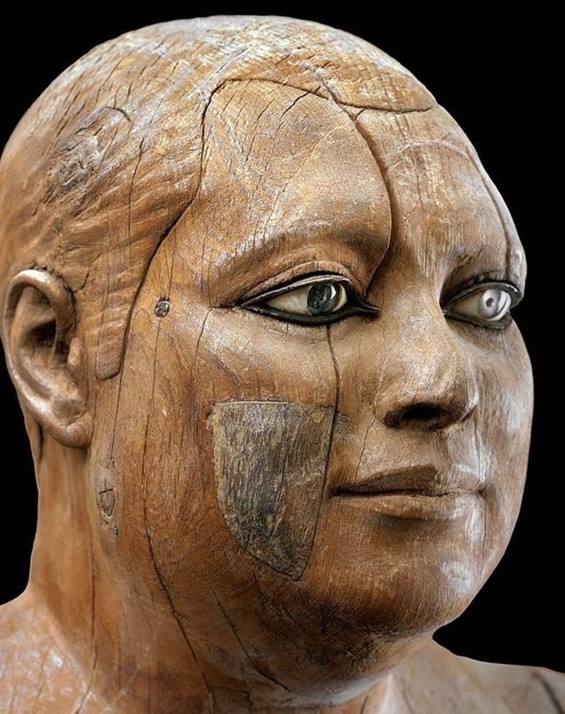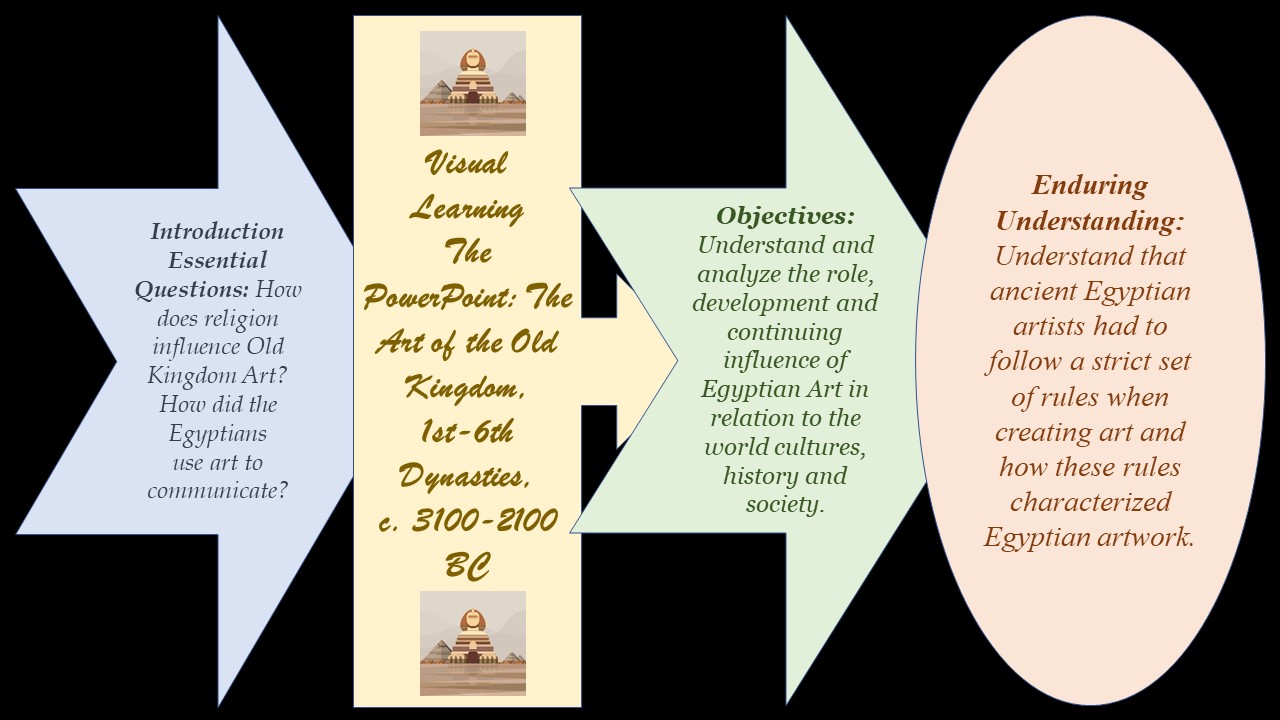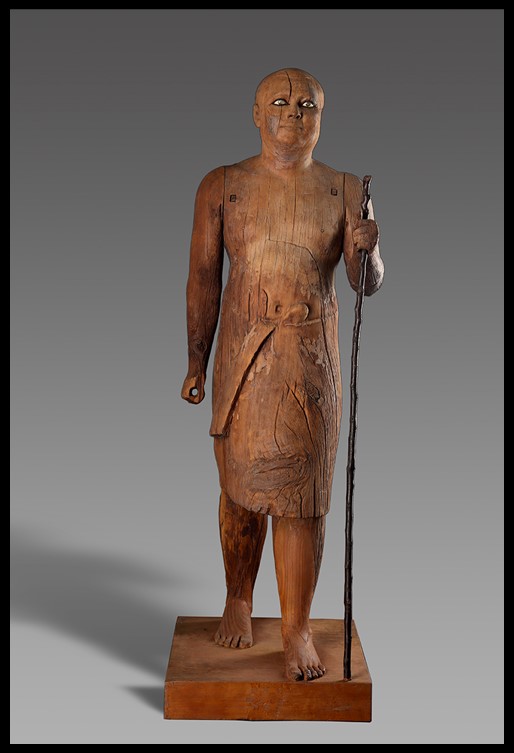
Ancient Egyptian art must be viewed from the standpoint of the ancient Egyptians to understand it. The somewhat static, usually formal, strangely abstract, and often blocky nature of much Egyptian imagery has, at times, led to unfavorable comparisons with later, and much more ‘naturalistic,’ Greek or Renaissance art. However, the art of the Egyptians served a vastly different purpose than that of these later cultures. The Art of the Old Kingdom Period is rich in masterpieces… awaiting us to explore them! https://www.khanacademy.org/humanities/ancient-art-civilizations/egypt-art/beginners-guide-egypt/a/egyptian-art?modal=1
Let’s start with my Steps to Success Lesson Plan Outline… Today, our Goal is to “travel” through the Old Kingdom timeline and identify important artworks that reflect aesthetic values, fascinating funerary traditions, or daily life.

Let’s focus on Old Kingdom three-dimensional, and two-dimensional Sculpture

Sculpture played an important part in the lives of ancient Egyptians. They used sculpture to appease their gods, honor their kings and queens, and satisfy the needs of the afterlife. Old Kingdom three-dimensional art sets the tone. Always facing forward, towards eternity, Egyptian statues in the round, appear powerful, motionless, firm, serene, and self-possessed. The represented Egyptians look formal and idealized. They either sit regally, as if expecting to be served, or stand upright, one foot forward, firmly placed on the ground, as if they are about to walk. The form is closed, the arms are held close to the sides, and stone fills spaces between limbs for extra security and support.
Old Kingdom two-dimensional art was equally important, particularly ‘relief’ sculpture. Two-dimensional art was for the Egyptians a way to present, but not replicate, aspects of the ‘real world.’ What they did is interesting… each object or element in a scene was rendered from its most recognizable angle and these were then grouped together to create the whole. This is why images of people show their face, waist, and limbs in profile, but eyes and shoulders frontally. The finished scenes are complex composite images that provide complete information about the various represented elements as if designed from different viewpoints. https://www.khanacademy.org/humanities/ancient-art-civilizations/egypt-art/beginners-guide-egypt/a/egyptian-art?modal=1
Ancient Egyptians used two kinds of ‘relief’ sculpture. Very popular is the so-called ‘bas-relief’ where the design stands out from the surrounding surface and the background of the composition is cut away and smooth. Equally popular is the ‘sunk relief’ where the outlines of designed forms are carved within a flat surface beyond which the forms do not project.
The Old Kingdom was an incredibly dynamic period of Egyptian history. The Old Kingdom was equally dynamic in Art. It astonishes us with the serene beauty exhibited in its statues, the displayed Pharaonic, or not, power and confidence, and the amazing dexterity of craftsmanship. Simply put…Amazing!
Follow The Art of the Old Kingdom Period PowerPoint and examine more than forty-five Old Kingdom works of art… statues, jewelry, furniture, frescoes, and relief carvings. The presented Old Kingdom ‘highlights’ range in date from about 2600 BC to 2400 BC. Please… Check HERE!
For an Old Kingdom Timeline, please… Check HERE!
Learn about the Pyramids at Giza, Egypt’s Ancient Wonders through a Rick Steves Video… https://classroom.ricksteves.com/videos/pyramids-at-giza-egypt-s-ancient-wonders
Watch a Video about the Mastaba of Mereruka… https://www.youtube.com/watch?v=4wQJ9AH2so0
Watch a National Geographic Video (6:13min) on how Ancient Egypt contributed to society with its many cultural developments, particularly in language and mathematics… https://www.youtube.com/watch?v=hO1tzmi1V5g&t=303s